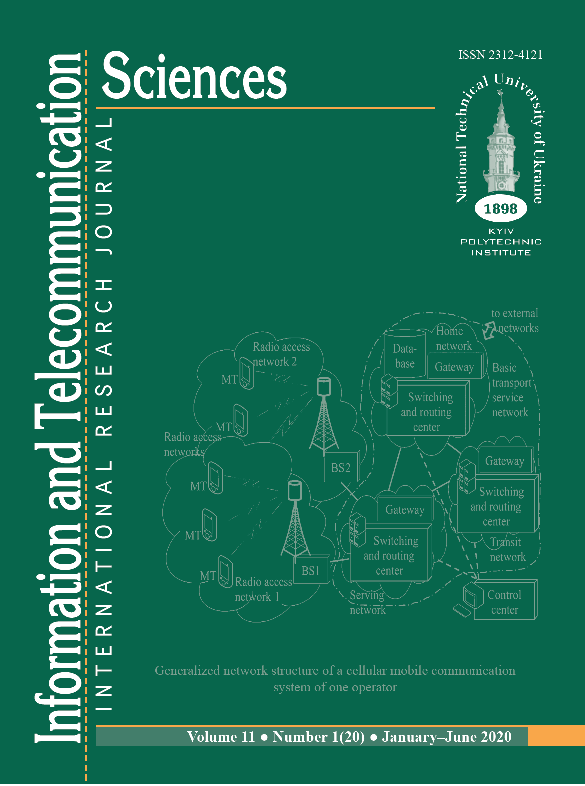RECOMMENDATIONS CONCERNING THE ENERGY PARAMETERS SELECTION FOR MOBILE NETWORKS RADIO REPEATERS
DOI:
https://doi.org/10.20535/2411-2976.12020.82-86Keywords:
UMTS, radio repeater, EIRP, statistical Okumura-Hata model, base station.Abstract
Background. UMTS networks which belong to 3G standard help to solve the problem of mobility of different types of devices such as: POS-terminals, smartphones, sensors. Networks of this type have enough channel capacity.
However, quality of radio coverage has sufficient impact on these networks. Installation of radio repeaters may be a solution to the problem of coverage quality along with proper planning of the placement of base stations. However,
when using radio repeaters, enough attention should be paid to determining their power, type and parameters of antenna equipment, proper installation, since ignoring this can lead to interference and poor quality of service for
subscribers of this cell.
Objective. The purpose of this article is providing the method and practical recommendations concerning calculations of the energetic parameters of the radio repeaters in order to avoid interference in mobile networks.
Methods. Study known publications and standards concerning UMTS radio subsystem. Based on the requirements for receiving signal level at the receiver input of the base station and using statistical Okumura-Hata model concerning the signal attenuation in the different environments, calculate requirements for Equivalent Isotropic Radiated Power (EIRP).
Results. Tables with EIRP requirements for urban, suburban and rural conditions depending on distance to base station.
Conclusions. Methods of research and results may be used during the project process, installation and under operation process of radio repeater in mobile networks.
References
A.Sibille C. Oestges A. Zanella MIMO
from theory to implementation.: Academic press 2011;
E.Dahlman S.Parkvall J.Skold 4G LTE
advanced pro and the road to 5G.: Academic
press 2016;
ITU-R Specification M.1801-2.

